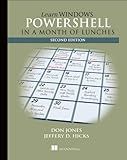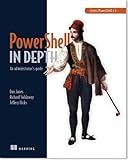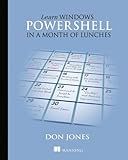Best PowerShell Tools to Import Certificates to Buy in December 2025

Learn PowerShell Scripting in a Month of Lunches, Second Edition: Write and organize scripts and tools



Beginner’s Guide to PowerShell Scripting: Automate Windows Administration, Master Active Directory, and Unlock Cloud DevOps with Real-World Scripts and Projects



PowerShell for Penetration Testing: Explore the capabilities of PowerShell for pentesters across multiple platforms



Learn PowerShell Scripting in a Month of Lunches



Learn Windows PowerShell in a Month of Lunches



PowerShell for Sysadmins: Workflow Automation Made Easy



Learn PowerShell Toolmaking in a Month of Lunches



Learn Windows PowerShell in a Month of Lunches



PowerShell Advanced Cookbook: Enhance your scripting skills and master PowerShell with 90+ advanced recipes (English Edition)


To import a certificate using PowerShell, you can use the Import-Certificate cmdlet. First, make sure you have the certificate file saved on your local machine. Then, open PowerShell and run the following command:
Import-Certificate -FilePath C:\path\to\certificate.cer -CertStoreLocation "Cert:\LocalMachine\My"
Replace "C:\path\to\certificate.cer" with the actual path to your certificate file. The CertStoreLocation parameter specifies where the certificate should be imported to. In this example, we are importing it to the "Personal" certificate store for the local machine.
After running the command, PowerShell should display a confirmation message indicating that the certificate has been successfully imported. You can then verify that the certificate is imported correctly by checking the certificate store using the Certificate Manager tool on your Windows machine.
How do I import a certificate into the local machine store using PowerShell?
To import a certificate into the local machine store using PowerShell, you can use the following command:
$certPath = "C:\path\to\certificate.cer" $store = New-Object System.Security.Cryptography.X509Certificates.X509Store -ArgumentList "My", LocalMachine $store.Open("ReadWrite") $cert = New-Object System.Security.Cryptography.X509Certificates.X509Certificate2 $cert.Import($certPath) $store.Add($cert) $store.Close()
In this script, replace "C:\path\to\certificate.cer" with the path to your certificate file. This code will import the certificate into the "My" store of the local machine. You can change the store name or location by modifying the arguments in the X509Store constructor.
What is the command to import a certificate with a password in PowerShell?
To import a certificate with a password in PowerShell, you can use the Import-PfxCertificate cmdlet. Here is an example of how to use this command:
Import-PfxCertificate -FilePath C:\path\to\certificate.pfx -Password (ConvertTo-SecureString -String "YourPassword" -AsPlainText -Force) -CertStoreLocation Cert:\CurrentUser\My
Replace C:\path\to\certificate.pfx with the file path of your certificate, "YourPassword" with the password for the certificate, and Cert:\CurrentUser\My with the certificate store location where you want to import the certificate.
How to import a certificate and mark it as exportable in PowerShell?
To import a certificate and mark it as exportable in PowerShell, follow these steps:
- Open Windows PowerShell as an administrator.
- Use the Import-Certificate cmdlet to import the certificate. Specify the path to the certificate file and the store where you want to import it. For example:
Import-Certificate -FilePath "C:\path\to\certificate.cer" -CertStoreLocation "Cert:\CurrentUser\My"
- Use the Import-PfxCertificate cmdlet to import a .pfx file. Specify the path to the .pfx file, the password for the file, and the store where you want to import it. For example:
Import-PfxCertificate -FilePath "C:\path\to\certificate.pfx" -Password (ConvertTo-SecureString "password" -AsPlainText -Force) -CertStoreLocation "Cert:\CurrentUser\My"
- Use the Get-ChildItem cmdlet to list the certificates in the store and find the thumbprint of the imported certificate. For example:
Get-ChildItem -Path "Cert:\CurrentUser\My"
- Use the certutil command to mark the certificate as exportable. Substitute the thumbprint of the imported certificate in the command. For example:
certutil -repairstore -user MY "thumbprint"
After completing these steps, the imported certificate should be marked as exportable in Windows PowerShell.
